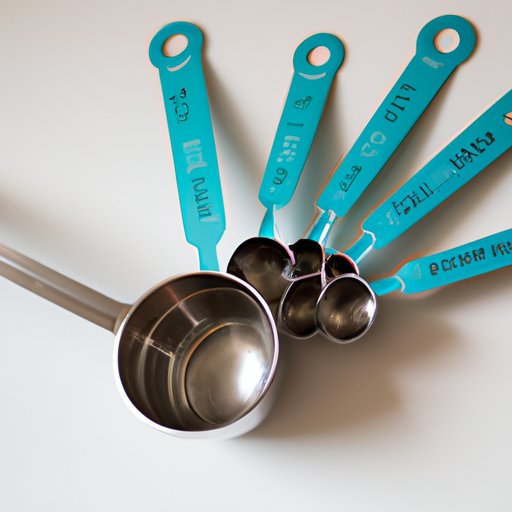Introduction
Do you ever find yourself in the middle of a recipe, wondering how many tablespoons are in a cup? Don’t worry, you’re not alone. This is a common problem for amateur and professional chefs alike. Accurate measurements are crucial when cooking and baking, and even a small miscalculation can ruin the entire dish. In this article, we’re going to explore how many tablespoons are in a cup, provide conversion tips and tricks, and equip you with the tools to confidently measure ingredients in your recipes.
Cooking Conversions: From Cups to Tablespoons
Most recipes provide measurements in either cups or tablespoons. Occasionally there are recipes that provide both. Here’s an easy-to-remember formula to convert cups to tablespoons: 1 cup = 16 tbsp.
For example, if your recipe calls for 2 cups of flour, you would need 32 tablespoons. It’s important to be consistent with your unit of measurement throughout the recipe.
When measuring liquids, it’s best to use a clear measuring cup. Place the cup on a flat surface, pour the liquid in up to the desired line, and check at eye level to get an accurate measurement.
Mastering Your Kitchen: How to Convert Measurements for Baking
Baking requires precise measurements, and it’s essential to follow the recipe closely. Here’s a breakdown of how many tablespoons are in a cup:
– 1/4 cup = 4 tablespoons
– 1/3 cup = 5 1/3 tablespoons
– 1/2 cup = 8 tablespoons
– 2/3 cup = 10 2/3 tablespoons
– 3/4 cup = 12 tablespoons
When measuring dry ingredients such as flour, spoon the ingredient into the measuring cup and level off with a knife. Don’t pack the flour, or you’ll end up using more than needed.
Here’s a conversion formula for other common baking measurements:
– 1 tablespoon = 3 teaspoons
– 1 ounce = 2 tablespoons
– 1 cup = 8 ounces
– 1 pound = 16 ounces
Recipe Fails: How Incorrect Measurements Can Ruin Your Dish
Inaccurate measurements can lead to recipe disasters, as recipe author Julia Child famously noted: “Cooking is an art, but baking is a science.” Here are some real-life examples of recipe fails caused by incorrect measurements:
– Adding too much baking soda or baking powder can cause baked goods to rise too quickly and then fall, resulting in a dense, sunken cake.
– Using too much salt can ruin a dish, making it inedible.
– Measuring liquids improperly can cause a recipe to be too dry or too moist.
It’s important to follow recipes closely, but it’s also okay to adjust for personal preferences or ingredient availability. Just be sure to make note of any changes you make.
Cooking On the Fly: How to Convert Recipes on the Go
If you’re in the middle of a recipe and don’t have the right measuring tool available, it’s helpful to have a quick reference guide on hand. Here’s a simple formula to convert cups to tablespoons: 1 cup = 16 tablespoons.
Some common recipes that use both measurements include salad dressings, marinades, and sauces. Be sure to practice measuring ingredients accurately, and use measuring tools when possible.
The Ultimate Guide to Conversion Charts: Measuring Cups vs. Tablespoons
If you’re serious about cooking or baking, it’s essential to understand the different measurement units and have access to conversion charts and formulas. Here’s a comprehensive guide to different measurement units in cooking:
– Cups: used for liquids and dry ingredients
– Tablespoons: used for small amounts of dry or liquid ingredients
– Ounces: used for liquids and dry ingredients
– Grams: used primarily in baking
Here are some helpful conversion formulas:
– 1 cup = 16 tablespoons = 48 teaspoons
– 1 ounce = 28 grams
– 1 pound = 16 ounces = 453 grams
There are also many conversion charts and online resources available for easy reference. Be sure to double-check your conversions and be consistent with your measurement units to avoid mistakes.
Conclusion
In conclusion, knowing how many tablespoons are in a cup is essential if you want your recipes to turn out perfectly. It’s important to be consistent with your unit of measurement throughout the recipe and to measure ingredients accurately. Remember, cooking is an art and baking is a science, but with the tips and tricks provided in this article, you’ll be able to convert measurements like a pro and avoid recipe mishaps.
